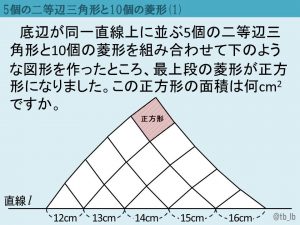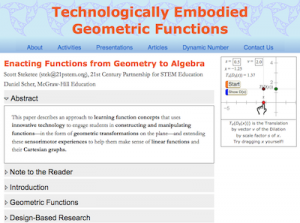Digging Deep Into Varignon’s Theorem
In the interactive Web Sketchpad model below (and here on its own page), ABCD is an arbitrary quadrilateral whose midpoints form quadrilateral EFGH. Drag any vertex of ABCD. What do you notice about EFGH? The midpoint quadrilateral theorem, attributed to the French mathematician Pierre Varignon, is relatively new in the canon of geometry theorems, dating to 1731. Mathematics … Continue Reading ››

 As interesting as many of the presentations have been, they've also been …
As interesting as many of the presentations have been, they've also been …